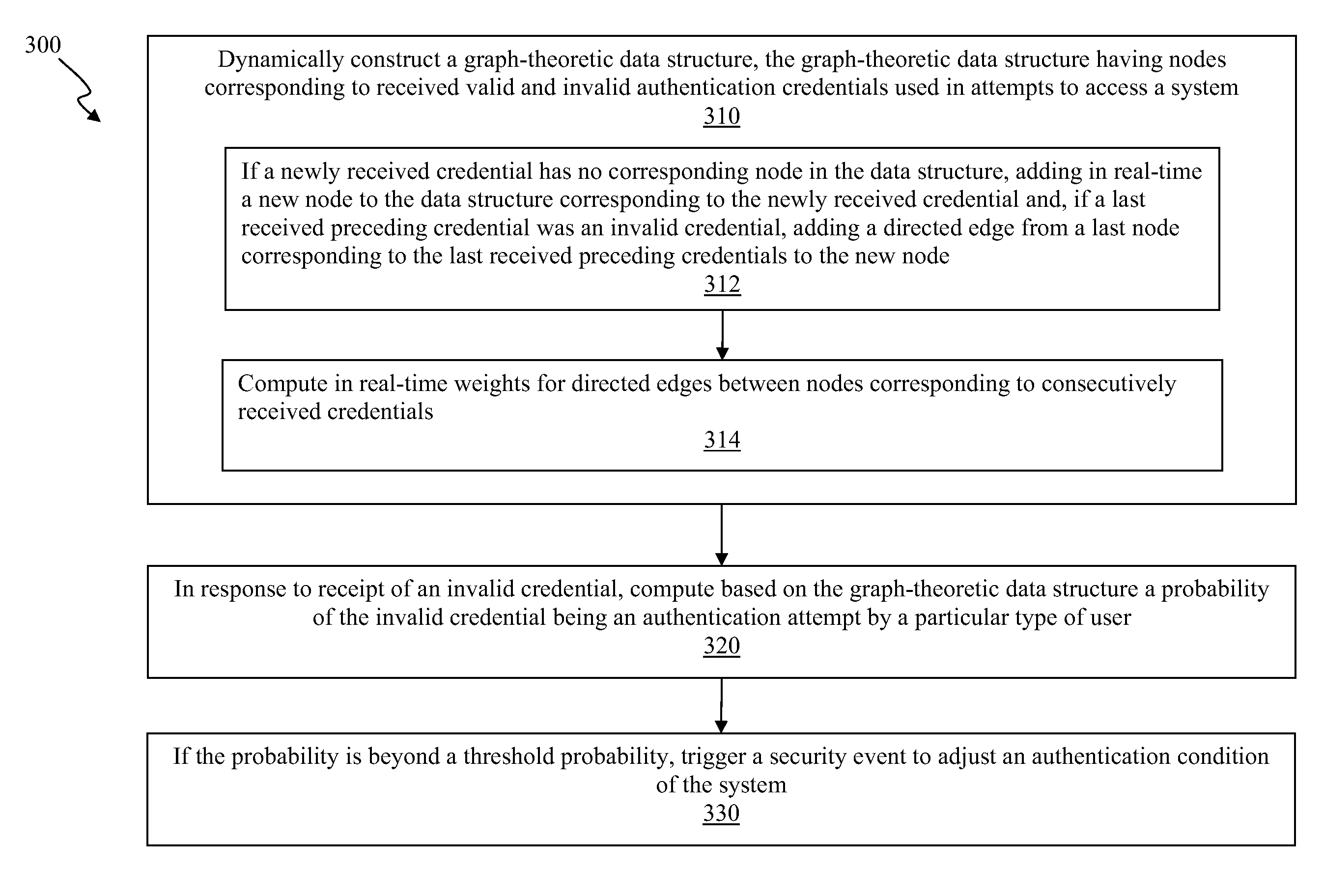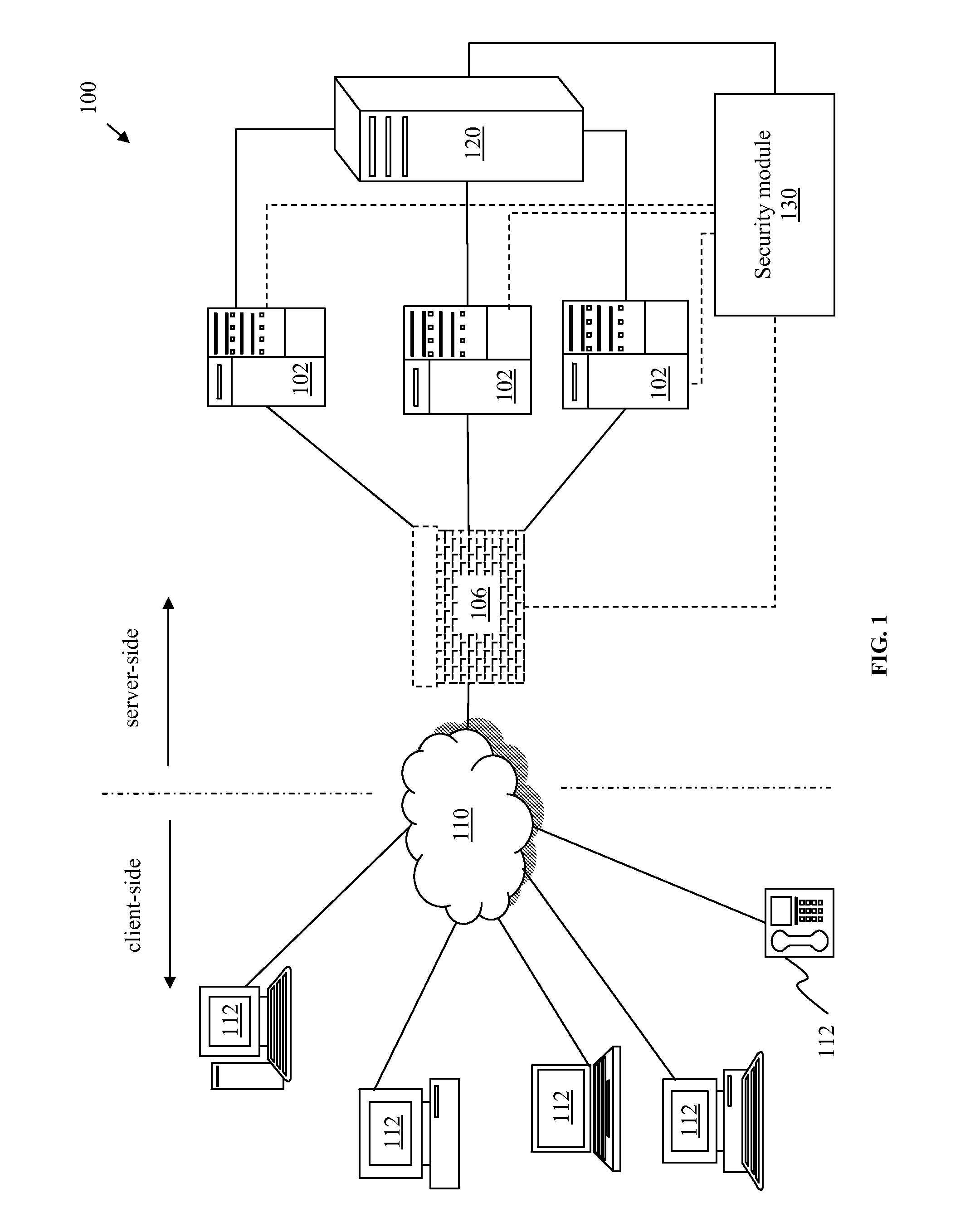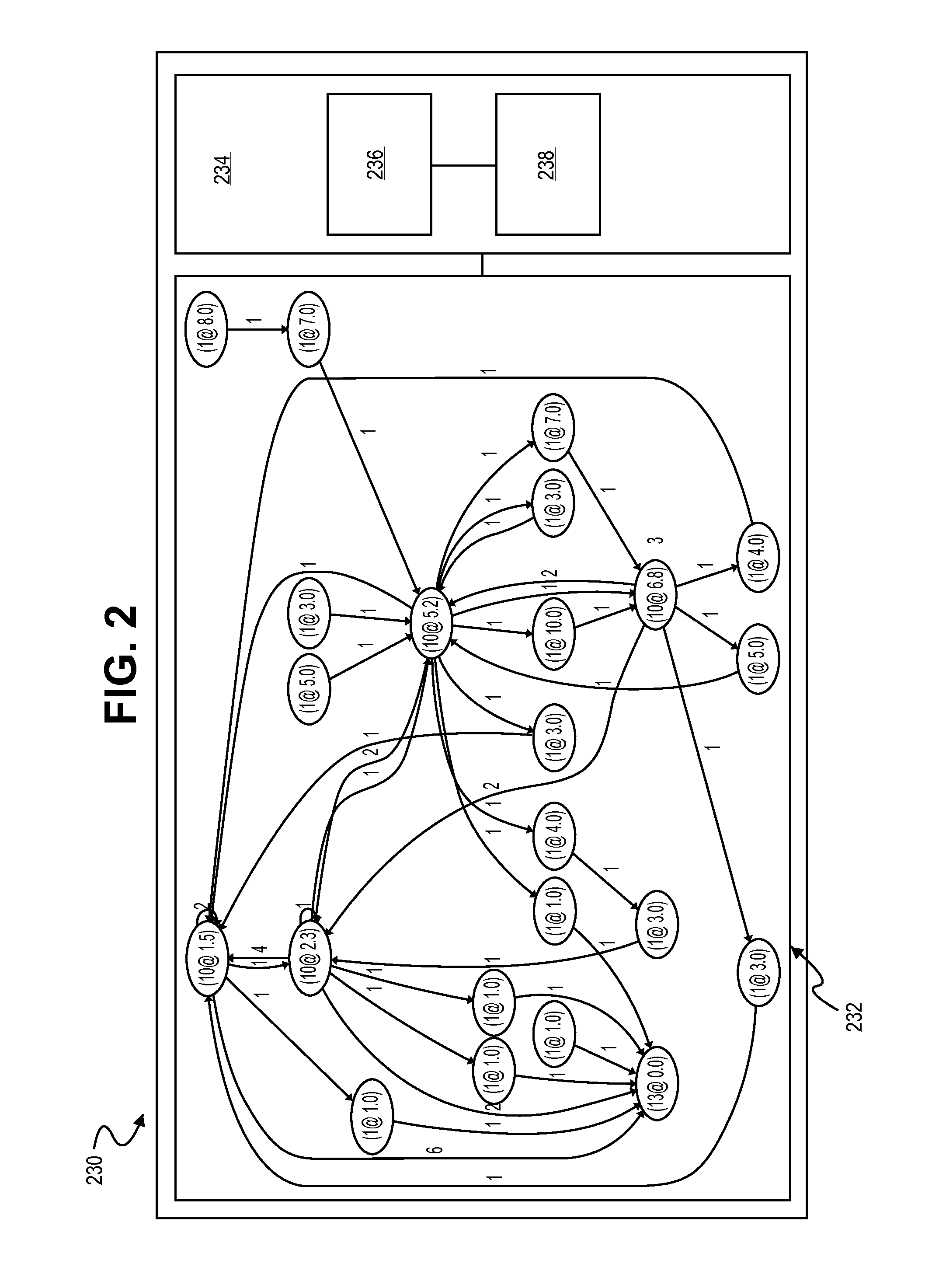Real-time adjustments to authentication conditions
a technology of authentication conditions and real-time adjustments, applied in the field of authentication systems, can solve problems such as denial of service to the intended user(s) of the system, and consume a system's computing resources
- Summary
- Abstract
- Description
- Claims
- Application Information
AI Technical Summary
Benefits of technology
Problems solved by technology
Method used
Image
Examples
Embodiment Construction
[0017]Embodiments of the invention relate generally to authentication systems and, in particular, to adjusting authentication conditions in real-time. Authentication conditions are the parameters of a system's authentication activities. Authentication conditions include, but are not limited to, the number of failed logins permitted for a particular account before a system blocks further attempts to login to the account without additional actions (e.g., clearance from a system administrator).
[0018]Authentication conditions, e.g., limits on login attempts, can be useful in protecting a system from unintended user or uses. A security policy that uses fixed and readily discoverable authentication conditions, e.g., placing a knowable blanket limit on account login attempts, can make attacks from malicious users simpler, rather than more difficult. For example, if a malicious user is aware of a three attempt lock-out policy, the malicious user can attempt three failed logins on several ac...
PUM
 Login to View More
Login to View More Abstract
Description
Claims
Application Information
 Login to View More
Login to View More - R&D
- Intellectual Property
- Life Sciences
- Materials
- Tech Scout
- Unparalleled Data Quality
- Higher Quality Content
- 60% Fewer Hallucinations
Browse by: Latest US Patents, China's latest patents, Technical Efficacy Thesaurus, Application Domain, Technology Topic, Popular Technical Reports.
© 2025 PatSnap. All rights reserved.Legal|Privacy policy|Modern Slavery Act Transparency Statement|Sitemap|About US| Contact US: help@patsnap.com



